What was striking about the presentations is that none of them addressed those two key questions. Most of the speakers rambled quite a bit on topics which were only distantly related, rendering whatever point they were trying to make difficult to identify. In addition, it was clear that all of the speakers who were supposed to address the first question (Buchwald, Clauw and Afari) had an agenda, which was to promote the MAPP program. But, as a couple of members of the audience pointed out, proposing a network of coordinated centers is useless if there is no funding. (In fact, as Jenny Spotila observed, a similar proposal had been rejected by the NIH,) Even more confusing was the fact that two of the ME/CFS "experts" on this panel appeared to have little working knowledge of the illness.
The question and answer sessions revealed the weaknesses in both knowledge and expertise in some of the speakers. Jenny Spotila's cogent observation (addressed to Dr. Smith) that retiring the Oxford definition should also lead to retiring studies using the Oxford definition (i.e. PACE) was met with an answer so incoherent as to make it nearly incomprehensible. Dr. Friedman responded to the same question with the statement that "we need an empirical definition based on something as simple as symptom frequencies. Have we reached that point? No, we haven't." Apparently, Dr. Friedman did not listen to Leonard Jason's talk presented earlier that day in which Jason described an algorithm his group had devised which could identify patients with 90% accuracy based on the frequency of 15 symptoms. (Jason isn't the only one to have developed a highly sensitive and specific definition, Linder et al, also developed a highly accurate definition in 2002 using a similar model. Somewhat ironically, this study appeared in the AHRQ systematic review.)
Some of the gaffes during the Q&A were almost laughable. Dr. Kogelnik claimed that there was no ICD code for chronic fatigue syndrome, or if there was it wasn't used in clinical practice. (There is, and it is.) He also put his foot in his mouth when he claimed that his study on Valcyte was the first controlled clinical trial. (Suzanne Vernon called him out on that rather far-fetched claim.) Dr. Buchwald was prone to bouts of exaggeration. She claimed that over a two-year period her group published "dozens and dozens and dozens" of papers. (I was able to find a total of 89 papers naming Dr. Buchwald or her group as authors over a period of 26 years, many of which were reiterations of the same findings.) Both Dr. Buchwald and Dr. Clauw said they were "agnostic" about big data (whatever that is supposed to mean) immediately after giving presentations touting the benefits of gathering of large quantities of data. (To further add to the linguistic confusion, Dr. Afari said she wasn't "agnostic" meaning that she was "agnostic." ? ) Dr. Clauw claimed to have "invented" a device to measure pressure pain that was used in tactile research 40 years ago (when Clauw was in grade school). And so on.
That being said, some of the presentations were worth listening to. No, I take that back. Only one. Dr. Snell's discussion on the fundamental flaw of all CBT and GET studies had merit, but it probably went over the heads of the P2P panel. Unfortunately, in his discussion of leading questions (which was interesting but did not address the key question) he missed a golden opportunity to discount the PACE trial, not simply on its underlying assumptions, but on its complete lack of scientific rigor (e.g. changing outcome parameters half way through the trial in order to manufacture results consistent with their hypothesis. That alone should have prevented it from being published in any journal anywhere).
______________________________________
First published on ProHealth.
By Erica Verrillo
On December 9 and 10, 2014, the Pathways to Prevention (P2P) workshop was held on the NIH campus in Bethesda, Maryland. The workshop was sponsored by the Office of Research on Women’s Health (ORWH), which is the division of the NIH responsible for ME/CFS. The purpose of the workshop was to identify gaps in ME/CFS research, and to address key questions about incidence, prevalence, diagnosis and subtyping.
The afternoon sessions on December 9 focused on the unique challenges of ME/CFS research, and how innovative research can be fostered to enhance treatment for people with ME/CFS. Each presentation lasted approximately 20 minutes. At the end of the two afternoon sessions there were question and answer periods in which P2P panel members and the audience could address questions to the speakers.
The draft report of the meeting is available HERE. Members of the public can make comments, which will then be incorporated into the report, until January 16, 2015.
You can read the program book HERE.
You can read the meeting agenda HERE.
You can watch the December 9 presentations HERE.
You can read information about panel members HERE.
You can submit comments HERE. (Deadline is January 16, 2015.)
You can read a summary of the Day 1 morning presentations HERE.
NIH Pathways to Prevention: Advancing the Research on Myalgic Encephalomyelitis/Chronic Fatigue Syndrome (Day 1, Afternoon)
Air date: Tuesday, December 09, 2014, 8:30:00 AM (EST)
Runtime: 06:38:17 VIDEO
Session 2: Given the unique challenges to ME/CFS, how can we foster innovative research to enhance the development of treatments for patients?
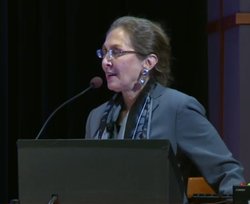
Designs Into ME/CFS Research
(20 minutes) (begins 3:09:49)
Professor of Epidemiology and General Internal Medicine
Center for Clinical and Epidemiological Research
University of Washington School of Public Health
Dr. Buchwald began by thanking Dr. Green, with whom she has had a long association. She then stated that she was going to use the term "CFS," rather than CFS/ME because it was “easier.”
Dr. Buchwald presented the fundamental question facing researchers as “What is fatigue, and how do we measure it?” In addition, where in the life cycle of fatigue are we taking a particular measurement, and what influences it? For example, there is fatigue from exertion, but there is also anticipatory fatigue. “If you are going to do a 20-mile run, you might have anticipatory fatigue.” She stressed that we have to keep in mind that fatigue is not sleepiness, which is the sine qua non of sleep disorders.
There are quite a few instruments to measure the perception of fatigue, some of which are better than others. Some of the instruments, for example, confound fatigue with pain, or with a particular behavior. Others only measure one dimension of fatigue, such as physical behavior, or physical activity. Of the many aspects of fatigue that can be measured there are physical measurements of fatigue, such as hormone levels or cytokines; mood, coping; and beliefs through psychometric testing, and subjective as well as objective measures. For example, a questionnaire measures self-reported physical impairment, whereas as a VO2Max test is objective.
Instruments can have a profound effect on the design of a study, as well as its outcome. For example, Dr. Buchwald cited a twin sleep study in which one twin had CFS and the other was healthy. According to the measurements used, the quality of sleep was essentially the same. But the twin with CFS had a different view about how he/she slept. The ill twin reported waking unrefreshed, and feeling as if he/she did not sleep well. “In our view, we think that there is a CNS mechanism that is unhinging perception from the actual behavior,” said Buchwald. In other words, people with CFS have an altered relationship between perception and behavior.
Another important measurement is the context in which fatigue occurs. Buchwald recalled one patient who had been sick for about a decade and then had a very sudden recovery. “They were telling me, I just can't do things like I used to. And I had to say, well, hey, you're ten years older.” [Editor's comment: Many ME/CFS patients have reported that uninformed doctors attribute their waning ability to perform tasks to aging.]
Another thing to consider in designing a study is the impact and severity of the illness. It's important to distinguish functional capacity from impairment and disability. Functional status is subjective, and is measured through questionnaires like the SF-36. Impairment is a physical limitation that alters a lifestyle. Disability is when an impairment results in an inability to perform specific functions. A person may be disabled in one area but not in others. For example, a person may be able to function at home but not hold a job.
Where in the life cycle of chronic fatigue syndrome do you measure fatigue? As you move from acute to chronic fatigue there are many things that may be happening simultaneously such as comorbidities, like fibromyalgia, or psychological dysfunction. Treatment is more difficult when there are overlapping conditions and there is a greater risk for psychiatric comorbidity.
What are you treating? Are you treating the syndrome, or the symptoms? In Clauw's study on milnacipran for treating fibromyalgia, the symptom of pain decreased with a twice a day dose, but overall wellbeing was the same. So, while the symptom diminished, the overall syndrome remained the same.
Another consideration in study design is the selection of control groups, which are hard to select because there is no biomarker for CFS. In addition, different control groups provide different answers, depending on whether they are sedentary, healthy, or have other illnesses. The advantage of twin studies is that the genetic factors are the same, so the control group is clearly defined. And for the most part you are also controlling for childhood exposures and family environment. To do a classical twin study, you need hundreds or thousands of pairs of twins. A second design in the co-twin study. Co-twin control studies use one twin in which one twin has a condition and the other doesn't. (This was the design of Buchwald's sleep study.) Co-twin control studies have the advantage of being able to focus on the contribution of a particular exposure in order to measure how it may be linked to a condition.
Dr. Buchwald recommended studying people who have recovered. “What is it above them that allowed them to recover?” she asked. Along these lines, we can look at functional or stimulus studies, do cognitive debriefing, or mechanistic studies looking at neurotransmitters. Dr. Buchwald's final recommendation was to “create a network of centers focused on CFS to all work together on issues we identify as critical.”
____________________
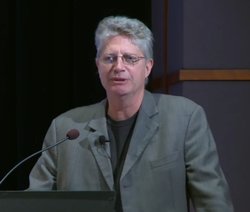
and Complex Chronic Conditions
(20 minutes) (begins at 3:31:17) [sound is poor at the beginning]
Professor of Anesthesiology, Medicine, and Psychiatry, University of Michigan Medical School; Director Chronic Pain and Fatigue Research Center, University of Michigan Medical Center
Dr. Clauw began by pointing out that having FDA-approved drugs for fibromyalgia has established the legitimacy of the illness. He believes that the same thing could happen for chronic fatigue syndrome, but it will require an integrated effort to understand the underlying mechanism of the illness, as well as identifying subsets of patients who might require different treatments.
The focus of Dr. Clauw's presentation was on the MAPP ( Multidisciplinary Approach to the Study of Chronic Pelvic Pain ) network, which is a research program launched by the National Institute of Diabetes and Digestive and Kidney Diseases (NIDDK) of the National Institutes of Health (NIH). The MAPP Network includes researchers with clinical, epidemiological, and basic research expertise, all working collaboratively to identify the cause and underlying mechanisms of chronic pelvic pain, and to establish definitions. The MAPP Research Network is comprised of six Discovery Sites that conduct the research studies and two Core Sites that coordinate data collection, analyze tissue samples, and provide technical support. Each site receives about one million dollars a year in funding.
Dr. Clauw pointed out that chronic pelvic pain syndromes such as interstitial cystitis share a lot of symptoms with CFS, ME, and fibromyalgia. While definitions are important, the MAPP network researchers decided to cast a broad net in order to better identify subsets of patients. Controls consisted of healthy people, as well as those with overlapping conditions, such as chronic fatigue syndrome and fibromyalgia.
Early findings of the MAPP indicate that symptom duration has little impact on symptom severity. (That is, symptoms do not become more severe over time.) Another finding is that people with chronic pelvic pain conditions do not experience chronic pain elsewhere, which is quite different from FM and CFS patients. No salient psychosocial factors were involved in chronic pelvic pain patients. There is no psychiatric “smoking gun” or predictor of symptoms. (As an aside, Dr. Clauw commented that psychosocial factors have been “over studied” in CFS/ME, because often investigators have “nothing else to hang their hat on.”)
Over the course of a year, roughly a quarter of the patients demonstrated spontaneous improvement of symptoms. Roughly the same amount experienced a worsening of symptoms. Treatment trials were not begun until a year's worth of data had been collected, because patients tend to enter trials when they are the sickest, which skews final results (regression to the mean).
Some of the problems they encountered were that patients had different definitions of “flares,” which could last from minutes to days, and that pain thresholds vary widely in individuals. However, they did discover that the patients with the lowest pain thresholds tended to do worse over time. Neuroimaging techniques were extensively used, and not only did the patients with chronic pelvic pain differ from controls, but men and women differed from each other.
The MAPP group has conducted a number of promising studies looking at proteomics, the microbiome, and other areas, 15 of which correlate with symptoms, and thus may produce a biomarker.
In summary, experimental and neuroimaging studies have provided objective and reproducible characteristics which can distinguish CPP patients from controls. There are two distinct phenotypes, those with localized pain, and those with centralized pain (throughout the body), and these correlate with symptoms over time. Imaging studies can be used to assess the efficacy of a treatment.
Dr. Clauw suggested that the MAPP program would be a “wonderful way to study CFS/ME,” and could be used as a blueprint for studying chronic fatigue syndrome.
__________________
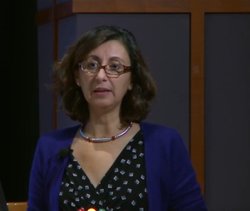
to Understand ME/CFS
(20 minutes) (begins at 3:50:34)
Associate Professor, University of California, San Diego Healthcare System; Director of Clinical Research, Veterans Affairs (VA) Center of Excellence for Stress and Mental Health; Division Co-Director, Mental Health Integrative and Consultative Services, VA San Diego Healthcare System
Dr. Afari proposed that comorbidity research could move the field forward in terms of understanding, diagnosing and treating CFS, because there are many different co-occurring conditions. many of which not only share symptoms, but share immunological and other test results. Research on patients with and without comorbidities may help shed light on how to treat subgroups, as well as provide valuable clues as to the underlying mechanisms of the illness.
Dr. Afari observed that while patients with CFS are usually seen by internists, patients with overlapping conditions are seen by a variety of specialists. She pointed out that physicians and researchers bring their own training and expertise to bear on how these conditions are studied. For example, psychology has played a significant role for many of these conditions, as has anesthesiology. What Dr. Afari recommended was an increase in collaborative effort, which had, she said, not been sufficient to move the field of CFS forward.
Focusing on comorbidities may help reveal shared physiological pathways, shared risk and protective factors, as well as identify factors that can affect the course of the illness and potential interventions. Dr. Afari acknowledged that the study of comorbidities was not her own idea, but was pioneered by Helena Kraemer, who studied the relationship between psychiatric and physiological comorbidities.
Most studies on comorbidities have centered on epidemiological comorbidities, in which people with one condition are more likely to develop a second. For example, women with breast cancer are more likely to develop depression that women without breast cancer. Dr. Afari asked the question: “Why are these conditions happening together?”
It is well known that CFS occurs with fibromyalgia. It is also known that central sensitization of pain is a key factor in fibromyalgia pain. Dr. Afari proposed that putting these two things together and studying the role of central sensitization in CFS could move us forward in understanding the pathophysiology of CFS.
Clinical comorbidities may also help with developing interventions. Dr. Afari suggested that treatment for one condition could lead to treatment for CFS. For example, a study showed that fatigue self-management was useful for MS, therefore fatigue self-management might be useful for CFS. [Editor's comment: Clinical studies of self-management in ME/CFS have not shown it to be particularly effective (Meeus, 2010).] In another example, reclined exercise is helpful for POTS. “So,” she asked, “Could it be that reclined exercise could be a treatment for ME/CFS?”
Those with comorbidities may have a different course, prognosis, and require different treatment. Future research, she concluded, should be based on MAPP-style collaborations, clinical trials that address comorbidities and twin studies to identify genetic and environmental contributing factors. [Editor's comment: Most of the comorbidities mentioned in this talk were either somatic “functional” disorders or psychiatric.]
____________________
[No questions from the panel]
Q: Wilhemina Jenkins, parent of patient: I was here 20 years ago at NIH, talking about this illness. I'm back today to make sure the panel understands about this illness, and to make sure that 20 years from now my daughter will not be here asking the same questions that we have been asking for the past 20 years. My daughter came down with this illness at the age of 14. My concern when we're talking about innovative research is that we move away from the idea that this is a fatiguing illness. We tend to have this under an umbrella of fatigue because of the name, and because of the history. You heard this morning how the various and sundry definitions, some of which are based solely on fatigue, have resulted in some very confusing conclusions about this illness. But from the day I walked into my first support group meeting, the major element that people talked about was not fatigue but post-exertional malaise. All illnesses deal with fatigue, but post-exertional malaise is the important issue and along with that neuro-cognitive disorders. I hope that there's a way to get more patient input so you can see what's important to patients. Post-exertional malaise is the fundamental key element in this illness and it's not included in a number of definitions that have been used in the report the panel has received. If we do not restrict our research to the illness that we know, the one that involves post-exertional malaise, unrefreshing sleep and neuro-cognitive problems, I am afraid we will be looking at the wrong illness for another 20 years. The first thing we have to do is make sure we are looking at the right population. Contradictory research results are the result of contradictory patients.
A: Dr. Clauw: I don't want to weigh in on post-exertional malaise but I do think it is important to tell you that in the MAPP we start with focus groups of patients. If you don't do that what you're talking about will happen. We didn't know that cognitive problems were part of fibromyalgia until we did the first cognitive interviews 12 or 13 years ago. They had coined the term “fibrofog” in advance of any of us knowing about it or thinking that it was an important domain. Stiffness is another symptom. When I was trained as a rheumatologist we were trained that stiffness was a marker for an inflammatory disease, but we don't think of fibromyalgia as being an inflammatory disease. Contemporary networks should begin with qualitative research and with focus groups, asking patients about what bothers them.
___________________
Q: Jennifer Spotila, patient and advocate (4:18:09): I was glad to hear you talk about the MAPP initiative today, but I'll note that we discussed it at a CFSAC meeting three years ago. NIH declined to fund an initiative like that for this disease. The other thing I want to bring to the panel's attention is a number of innovative research concepts that we have not yet discussed: big data, systems networking analysis, what we can learn from neurological diseases, autoimmune diseases, and even anti-antibody diseases, like anti-NMDA encephalitis. We've discussed none of that today, and yet there are so many promising results littering the scientific landscape that need investigation. So I would urge the panel to think about innovative solutions truly, not covering something we discussed three years ago. NIH said no then, and I'll note that two months ago NIH said no to a big data initiative for ME/CFS. And they said no to a recommendation for an RFA [request for application – for a grant] two months ago. I urge you to look at the reasoning NIH offered for why they declined those recommendations.
___________________
Q. Dr. Green (4:20:00): What has been left on the table that could inform the science that could lead to better treatments and improved wellbeing for people with this disease?
A: Dr. Buchwald: I would go back to the recommendation of creating a network. Because you've got to understand the mechanisms before you understand what treatments might work the best. I guess I'm a little agnostic about big data because in big data you're going to end up with administrative data or self-reported data, and I think you actually have to examine patients, you have to lay your hands on patients, you have to hear their stories. Big data isn't going to give us the answer until we have done the necessary mechanistic and treatment studies that will allow us to correctly classify patients in the big data.
A: Dr. Clauw: I would agree. I'm less than agnostic about big data. I'm unexcited about big data, because I think that one of the problems with using big data is that most people with CFS … I don't know if there's a formal diagnostic code for it. And if there is, it's never used in clinical practice. [Editor's comment: The 2014 ICD-9-CM Diagnosis Code for Chronic Fatigue Syndrome is 780.71. It is used in clinical practice.] So, it would really be hard to use big data in the classic sense that it is with classic diagnoses where people are making the diagnosis in clinical practice with some level of accuracy. I don't think that exists now. You brought up a lot of really good ideas, I'm just not sure that big data is one of them.
A: Dr. Afari: I completely agree. I'm also not agnostic on big data. There are so many different factors contributing to a physician using an ICD-9 code, whatever data we get from that is not going to be as useful I don't think.
Dr. Green: But it does bring up the potential for registries.
A: Dr. Clauw: I think registries would be helpful. One of the nice things about MAPP is that for every patient that comes in … and you may not agree with what criteria for CFS we use … but we categorize people for all these comorbidities. We know if they have vulvadynia, we know if they have headache, we know if they have CFS, and so as these networks grow where these conditions are being studied, like the network that is focused on temperomandubular joint disorder and the MAPP, you're starting to get bigger and bigger data sets, and registry-type data, where you actually do know … but the problem is those people were not brought in with chronic fatigue syndrome as their primary diagnosis, they were brought in with interstitial cystitis, and they had that as a comorbidity. Mining that material for people who have CFS would not be nearly as helpful as setting up a network on people who have that as a primary diagnosis. But as the networks get bigger, and you can share data, there really is strength in numbers.
___________________
Q: Dr. Klimas, researcher (4:25:37): With the complexities of the many case definitions, the lack of post-exertional relapse in many of those case definitions, we're never going to have a big umbrella biomarker thing that describes everybody because the way we describe the illness is too loosey goosey. But we do have very nice studies that correlate biology to evidence, to severity, to symptom complexes. The evidence is there. And others, not just this group, have done reviews, and said it's real and useful. So we need to stop saying big things that we said 20 years ago, like “There's no biomarkers,” or “It's so heterogeneous we just can't get there.” It's not that way. We really have to work at defining clearly who we are talking about, who's in the group, and why we are looking at that group with this set of methods. And that's a very doable and rational design. So I would ask the panel and the speakers how we might be able to help get behind and press the concept of using an NIH strategy to develop consortia to look at this. And I am also going to say that the speaker who was talking about big data [Jenny Spotila], she wasn't talking about big data the way you were. You are thinking about mining ICD-9 codes, Dan [Clauw] has got big data, and it's really more about the computational approach.
A: Dr. Clauw: I don't know that I could any more strongly endorse a MAPP-type thing. One thing I will say is that whatever the NIH is spending now on CFS/ME, if that was all put towards a network ... I would actually say that right now, spending money on R01s, or R21s, is a waste of money. You can't study these complicated illnesses with a grant that gives you $150,000 a year for three years because you can only look at a tiny element of that person, you can only look at a tiny number of participants, and you can only look at one particular domain. So, it may be that the NIH is already an aggregate with the different R series spending millions of dollars a year, and it might be somewhat unprecedented for the NIH to say we're not going to give money for the R series, but instead we are going to give money to centers, but if NIH did this, this would be a disease they should contemplate doing it in.
A: Dr. Buchwald: They did have center grants for two rounds. We got all of our twin work funded, and we never could have done that work with just R01s. As Dan said, in those studies we and others looked at multiple levels of disease and multiple kinds of psychological, sleep studies, viralogic studies, immune studies, and so on. So I totally agree. You've got a complicated, multi-level disease, you need a multi-level approach to try and understand it.
Dr. Klimas, researcher: Just to object for a moment. R01s and R21s have a place. I think you're suggesting that there's one pie, and we're going to move it from here to here, instead of saying “Oh my God, there's not enough money in the pot.” There's not enough money in the current pot to create a single center. There's not enough money currently in NIH-funded work to do any serious, comprehensive, large-end study. You can't just reallocate it over to there. New money will have to be found. That's terribly important. [Applause]
__________________
Q: Mary Dimmock, parent of patient: It may not have been your intention, and perhaps I am not interpreting it correctly, but I came away thinking that you are proposing a MAPP-style initiative that would look at overlaps with things like interstitial cystitis, fibromyalgia, chronic back pain, etc. The most exciting research that's going on in this field today is on energy production, and on immunological studies. It's on overlaps with autoimmune diseases. It's on antiviral treatments and virology. And to not study the overlaps with those conditions is not leading us where we need to go at this point in time. I know none of you are allowed to speak about treatments, but I am. My son is on rituximab, and I spoke with someone here today who is on an antiviral, and it's made a difference in their lives. None of the other treatments, the psychological treatments, CBT, GET are cutting it. So unless the treatment and research recommendations are really looking at innovative areas that need to be investigated for this disease, we're not going to make any progress. We're not going to make progress by being lumped in with all these different conditions that you talked about. I think that it's critically important for the panel to understand what the doctors who actually treat the disease are saying about it. You've gotten some information from AHRQ evidence review which lumped all these disparate definitions together, and came up with conclusions based on those. Those are not the way patients are being treated today. And finally, Lisa Petrison has put together a fantastic summary of all the research that's been done in this area that I would recommend the panel look at, as well as the IACFS/ME Primer. I will give these to the panel later. [Applause]
A: Dr. Clauw: Let me just clarify. If the NIH were to set up a MAPP-like network for ME/CFS, they should be pursuing all of those areas. When we started studying interstitial cystitis, we didn't start with what was promising in fibromyalgia and then apply that to interstitial cystitis. We started with what are the most promising area for interstitial cystitis and I would hope that the same thing would be done for CFS, that it wouldn't just borrow from what is found in fibromyalgia and irritable bowel, or these other diseases, it would really look at all the areas that you talked about.
___________________
Q: Dr. Jason (4: 33:22): I want to support what the panel and Nancy have mentioned about the importance of this type of network. I think it would absolutely revolutionize the type of work that's being done. But the question I'd like to ask the panel members is the secondary suggestion that R01s and R21s, individual investigators, might not be as beneficial. The two questions I'd like them to help us think through is right now there is a limited number of investigators, and from what I understand, fewer applications come in to the CFS special emphasis panel. The younger investigators often don't apply with the frequency in other disease areas. So, the question is, if we didn't have R01s, or R21s or R03s as mechanisms to bring in young investigators to this field, would it be possible that those few centers that exist might discourage the innovations that could occur and need to occur with the larger number of researchers? And second, is it possible that there are maverick investigators who are not really part of the network, who possibly don't come to these meetings, who wouldn't put a grant application in, who might have brilliant ideas that need to have a venue for funding, and if we weren't funding those R21s that they might come in from left field with something truly imaginative? Would that be a loss for the field as well?
A: Dr. Clauw: You can have it both ways. In the second phase of the MAPP, although there are six discovery sites, there is a real aggressive effort to have other ancillary studies be added to the MAPP. And all the ancillary studies have to do is use the same type of phenotyping we use so that when you get your data we can all make sense of it. People can write R01s and R21s, and be part of the network, or they can just come to the meetings, and at least understand what we're all doing. I wasn't really meaning what I said, literally, that they should get rid of it, but that you can actually have it both ways.
A: Dr. Buchwald: I think the issue of junior people coming into the field is really huge, because as I look around I see all the same people I saw 20 years ago doing the work. I think part of the issue is that there is enough funding for someone to envision a future. In chronic fatigue syndrome, how do you garner enough support to make a career out of this topic? I think having centers might actually energize the field.
A: Dr. Afari: I'll add to that because I was once a junior person. I completely agree with Dedra that having the CFS centers way back when was really instrumental for bringing me in, and I actually see that happening with the MAPP network as well having access to lots of data. And having access to lots of expertise, really gives a leg up to folks who are new to the field.
A: Dr. Buchwald: And I would say that “new to the field” is different from junior people. Because new to the field means you bring in people from different fields, with different perspectives. For 25 years MAPP was run by urologists and nothing the treatments they tried worked. MAPP is now open to other research areas. For example, now we have an expert on quality of life, and how do you really measure quality of life in people with CFS?
_________________
Q: Betsy Lawrence, neuropsychologist (4:39:42): I was very interested to hear you [referring to Dr. Clauw] say that you didn't know that certain groups of patients had cognitive issues until 13 years ago, because clinically that shows up when neuropsychologists are doing testing. They other thing I thought about was mining the blogs. People may be self-identified when they go to a blog, they may not meet the classification of chronic fatigue syndrome, but if they themselves are talking about their symptoms, there may be many ways that the disease gets expressed.
__________________
Q: Suzanne Vernon, Solve ME/CFS Initiative: The NIH has been finding CFS research for over 20 years, and as you indicated, there were centers, four or five centers, for two cycles. Where is all that data? Is it possible that that data may inform the way forward for CFS?
A: Dr. Buchwald: I don't know where anyone else's data are, but we published dozens and dozens and dozens of papers. [Editor's comment: In a Pubmed search of Dr. Buchwald's papers, I was not able to find “dozens and dozens and dozens” of papers published during the 2-year period in which centers were funded. There were total of 87 papers by Dr. Buchwald on CFS spanning the years 1987-2014.] We are still using that data. One of the issues with those centers was that we didn't all use the same definition, and we didn't work closely together. We didn't combine data or protocols. It might be hard to try to combine the data at this point, but it's probably worth thinking about.
___________________
Q: Robert Miller, patient (4:43:23): The three of you have been talking about being creative about trying to pursue the cause and treatments for this illness. In my 15 years of advocating for this illness, it's the same thing I've heard for 15 years. It's “Let's get creative and figure out a different way of attacking chronic fatigue syndrome.” As I said in my presentation, nothing is going to happen in this field until funding comes. You're talking about centers of excellence – that was on minimal funds – a million or a million and a half for each one of the centers. Were there three of four centers:?
A: Dr. Buchwald: I think there were four, there might have been five. [Audience member: “Three”]Were there three?
Robert Miller: So three or four centers, and you say that you feel there was progress made. Until the funding comes you can get as creative as you want, you're not going to get anywhere. [Applause]
A: Dr. Clauw: That same amount of money invested now would be more fruitful than in the past, because of the ways we put together a MAPP-type network where we would be sharing protocols and really working together, while those were really centers that did their own thing. They were reviewed based on the science that each center was proposing.
[BREAK]
Session 3: What does research on ME/CFS tell us about the presentation and diagnosis of ME/CFS in the clinic?
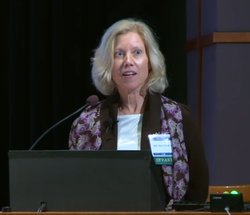
(20 minutes) (begins 4:46:29)
Associate Professor, Department of Medical Informatics and Clinical Epidemiology, Pacific Northwest Evidence-based Practice Center, Oregon Health & Science University
Dr. Smith's presentation focused on the literature review for studies of diagnostic methods for ME/CFS. She covered limitations of the research, discussed the relevance of the research and future research needs.
She began by saying that the literature on diagnosing ME/CFS in this area is very broad. The biggest limitation in this area is the lack of a gold standard, that is, an accepted test that can reliably distinguish between patients with and without a specific condition. Of the eight case definitions used to diagnose ME/CFS none is considered a gold standard.
Of the 36 diagnostic studies included in the literature review, many were descriptive, and not amenable to a quality rating (excellent, good, poor). Sample sizes were small, and consisted mostly of white females between the ages of 35 and 57. We are not seeing rural patients, or those who are home bound and not able to get to appointments.
Seven studies compared ME/CFS patients diagnosed using different case definitions. These studies found that patients identified with the ME or ME/CFS criteria (CCC and ICC) had more functional impairment than those diagnosed with the Fukuda criteria. Three studies compared patients using the Fukuda criteria to patients with fatiguing illnesses other than CFS (including psychiatric conditions, autoimmune diseases, and other chronic diseases). In general, patients without CFS were less impaired. The four studies of biomarkers used for diagnosis were too small to support conclusions.
Diagnostic variations by patient subgroups revealed that patients diagnosed later in life were more impaired. Certain subscales of the SF-36 were able to predict failure to recover after exercise, but no studies evaluated the accuracy of different case definitions among patients with specific sets of symptoms.
In terms of harms, five studies identified stigma associated with the diagnosis, including loss of work opportunities, negative character judgments, social isolation, and changes in interactions with the medical profession (e.g. prejudice from physicians, stereotyping). There was also the burden of waiting for diagnosis, and harm associated with long delays in diagnosing the illness.
Directions for future research:
- Establish a single case definition and retire the Oxford case definition.
- Evaluate diagnostic testing for a diverse group of patients
- Report established measures of diagnostic accuracy as outcomes
- Address biases inherent in current research, e.g. patients recruited from specialty clinics may represent the medical specialty of the clinic
- Consider subgroups in reporting results of diagnostic tests
- Establish an international ME/CFS registry
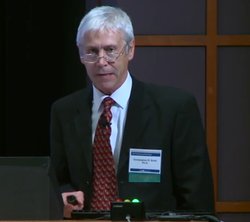
(19 minutes) (begins at 5:06:52)
Scientific Advisory Committee Chair, The Workwell Foundation
Dr. Snell began by saying that according to the AHRQ review, GET and CBT were effective in reducing fatigue in ME/CFS patients, and that “nothing else works.” “This really does not fit with my experience,” said Dr. Snell. “I do not conceive of CBT ever being a cure for ME/CFS.” Fortunately, the AHRQ review picked up on one of the major issues with graded exercise therapy: not only is it not helpful to a great number of patients, it can actually be extremely harmful. So, the question is how did GET come about as beneficial in the review?
The best funded research with the most subjects is on GET, which is the cheapest treatment option. The reason these studies show benefits is, in part, poor patient selection. Because the case definitions used have poor specificity, they may include patients with other conditions. But there is a more insidious reason why GET is shown to be beneficial in these studies, and that is the use of leading questions, which, in Florence Nightingale's words, are “a means of obtaining inaccurate information.”
Leading questions are a way of influencing how people will answer by including assumptions about issues and cutting off unwanted answers. The underlying assumption of studies showing GET to be beneficial to CFS/ME patients is that patients are deconditioned, and that there is an altered perception of effort resulting from reduced physical activity.
The next leading question is that CBT assumes that fatigue, fear of activity, and avoidance of activity are linked. Therefore, by modifying one response, it is anticipated that others will be affected (i.e. by overcoming fear of activity, there will be an increase in activity and a reduction in fatigue.) Again, this does not fit with the data.
To test this assumption, Dr. Snell's group administered exercise testing to patients with ME/CFS and controls. In both groups, perceived exertion and workload were correlated, although the ME/CFS group had to work harder. Essentially, there were no differences between objective and subjective measures of exertion for either patients and controls. Dr. Snell concluded that the assumptions underlying both GET and CBT are not supported by objective scientific research.
____________________
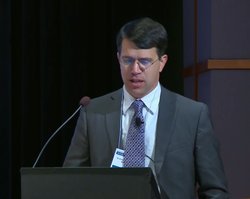
(20 minutes) (begins at 5:25:26 )
Founder and Director, Open Medicine Institute
According to Dr. Kogelnik, one of the biggest challenges for researching the comparative effectiveness of treatment is that there are different subgroups, or, at least “one big heterogeneous group.” Kogelnik asked, “How do we bridge the gap between one size fits all to personalized therapies?” - especially when there are no FDA-approved treatments for chronic fatigue syndrome.
Dr. Kogelnik claimed that there have been only three major placebo-controlled therapeutic studies on “chronic fatigue.” The first of these was a study on valganciclovir (Montoya et al. 2006 and 2013). “This was the first placebo-controlled study in the field that had been published in a long time … which, in many ways, stunned me.” [Later Suzanne Vernon challenged that statement saying that there were many placebo-controlled therapeutic studies prior to the Valcyte study.] Dr. Kogelnik then went on to explain that Valcyte had been used a decade or two earlier, but physicians had stopped prescribing it because patients often flare two weeks into therapy.
The second major study Dr. Kogelnik discussed was the rituximab placebo-controlled study on patients who had both chronic fatigue syndrome and cancer (Fluge et al. 2011)
After discovering that CFS patients treated for cancer with rituximab recovered Fluge et al. Launched a trial for CFS. In a trial of 30 patients, they showed that there was improvement, although there was a delayed positive response to rituximab. This is typical also of Valcyte, in which there can be delays of up to five months.
These two trials should be “screaming to the NIH” that this needs further investigation and merits funding.
The third study investigated Ampligen (Strayer et al. 2012 )A number of standardized measurements were used in the trial to measure outcome. Nevertheless, the drug was rejected by the FDA on safety and efficacy concerns.
Dr. Kogelnik concluded by saying that the studies on CBT have not pointed in as clear a direction as the three studies he cited in his talk. “We are at the same place as when we started the Valcyte study almost ten years ago,” he said. This is because syndromic definitions are too broad, there is no single biomarker, the disease is heterogeneous, and symptoms wax and wane. But, he concluded, there are glimmers of hope.
____________________
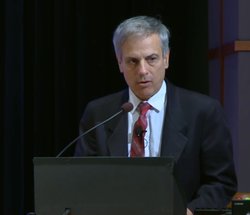
(20 minutes) (begins at 5:47:20)
Research Associate Professor of Psychiatry and Behavioral Science, Stony Brook University
The way Dr. Friedberg conceives of it, self-management in severe CFS/ME has three interactive principles:
- Activity patterns that are maladaptive, because they are either too much, too little, or alternate between the two
- Emotional distress (too much)
- There are far too few pleasant activities, and very little positive affect
All of these are malleable, controllable factors in prescribing self-management for these patients.
The goal is to correct activity patterns that are leading to symptom flare-ups, reduce emotional distress, and incorporate more pleasant experiences in the patient's daily life.
Self-management studies in ME/CFS have been based on CBT principles, except that you are asking patients to perform them on their own, rather than in face-to-face visits. In an early UK study by Chalder et al. (1997) self-management booklets were compared to no treatment in a group of patients with chronic fatigue. There was an improvement in fatigue after three months. Although Dr. Friedberg pointed out that these were patients who did not necessarily have full-blown chronic fatigue syndrome. In two studies by Powell there were improvements in fatigue after two and nine face-to-face visits. Dr. Freidberg noted that because there was no difference between having two vs nine visits “How much do you really need face-to-face visits?” [Editor's comment: Handing a self-management brochure to patients would be even cheaper than consults with a trained professional.]
In Knoop et al. (2008) patients received CBT via a manual and and emails. The authors concluded that “Guided self-instructions are an effective treatment for patients with relatively less severe chronic fatigue syndrome.” [Note: patients were selected according to the Fukuda criteria.] Dr Friedberg notes that clinical improvement is more meaningful than statistical improvement.
In one of Dr. Friedberg's studies, there was clinical improvement in 53% of a group using self-management. However, there was a high drop-out rate at follow-up (42%-53%) and, again, the patients with six months of chronic fatigue were lumped together with chronic fatigue syndrome.
Dr. Friedberg stated that about 60% of patients do not improve with behavioral intervention. This is because: 1) behavioral interventions are not that effective, and 2) the underlying pathophysiological process remains unaffected. One possible conclusion is that self-monitoring is simply not effective. But Dr. Friedberg suggested that improved self-management techniques, such as ambulatory monitoring, could be helpful to physicians and should be included as part of physicians' packets. In addition ambulatory monitoring recorded several times over the course of a day could yield more accurate phenotyping of the illness, and perhaps help to identify subgroups.
(Interestingly, Dr. Friedberg pointed out that when actigraphy is used in CBT studies it does not support the claim that fear of activity leads to lower levels of activity. Improved patients do not do more, and fatigue improvement is not accompanied by more activity.)
Other uses for home monitoring include measures of heart rate variability. Dr. Friedberg cited a study by Burton et al. (2010) in which reduced heart rate variability was correlated with poor sleep. Burton concluded that “Low HRV strongly predicted sleep quality-suggesting a pervasive state of nocturnal sympathetic hypervigilance in CFS.” (Dr. Friedberg says that this indicates autonomic dysfunction.)
In a study by Stringer et al. fatigue severity was significantly correlated with pro-inflammatory cytokine (i.e. leptin) levels in six out of ten participants with CFS. Fatigue and variation leptin levels tracked each other over 25 days. (Normal levels of leptin were found in the CFS group, but they were more variable.) In conclusion, Dr. Friedberg stated that “mobile devices will help capture the biobehavioral data we are all looking for.”
___________________
Q: Angela L. Rasmussen, panel member: I have a question for Dr. Kogelnik about trans-genomic data (that's what I work on). In terms of future directions for research, what do you think are some of the challenges in terms of applying omics [genomics or proteomics] for development of biomarker panels and direct repurposing using pharmacogenomic approaches?
A: Dr. Kogelnik: We spend a lot of time applying omic technologies to patient groups. The challenge for us has been a funding issue. We have some very interesting pilot results that need to be expanded to larger groups. And I agree that big data, not insurance mining data, but omics data, is the way to go.
Dr. Rasmussen: I agree completely. I think it would be tremendously helpful to collect data and biological samples that could be applied to genomic or proteomic studies.
____________________
Q: Suzanne Vernon, Solve ME/CFS Initiative: I have a couple of points of clarification for the panel. Andy, you are forgiven for your comment that you didn't know of any randomized controlled trials before your trial. You were probably still in high school. There were randomized clinical trials before yours. I agree that the rituximab trials are very interesting, but the primary outcomes that the Norwegians used were self-reported symptoms and physician-reported symptoms. So, although that study is very intriguing and important, not using standardized validated instruments is a problem. But, since they didn't know much about CFS, they couldn't plan. Which brings me to my question: How can we get information to MDs so we don't have this dearth of physicians, and so we can conduct the research that needs to be done for CFS?
A: Dr. Kogelnik: I didn't mean to imply there were no studies, I really meant to highlight the high-impact studies … from my perspective. I think you're right, the standardization of metrics is a problem. But even with studies that are not very large, we have traction. There are measurements, questionnaires, physical measurements, molecular measurements, and that's what NIH needs to step up to in terms of funding. Frankly, most of what we have done on the therapeutic front has come from private money.
__________________
Q: Carol Head, Solve ME/CFS Initiative (6:13:50): I have a question for the P2P panel. You found that 1% of the studies were worthy to be included, and even within that, most of the studies were poor or fair. Much of what we have done today is explain why there is so little research and why the results of those research have been dismal. We have low funding, we have a heterogeneous illness, which explains no biomarkers and all the other problems. I, for one, have been a supporter of this P2P process because I think there is value in shining a very bright public light on the dearth of research for this. Have there been other illnesses of this magnitude in which you have found such a low figure, and how would you recommend that be handled?
A: Dr. Smith: Often when we perform a systematic review we throw a wide net so we're not missing anything. It's not uncommon when we are looking at 6,000 abstracts to whittle it down to a very small number that will inform our conclusions about the evidence. We set strict inclusion criteria so we are not giving misleading information, so that we are not interpreting evidence in a way that people may take that as accurate when in reality the data is so flawed or so subjective that it's filled with biases and would lead to a wrong interpretation.
Q: Jennifer Spotila, patient and advocate (6:17:50): I would like to go back to Dr. Smith’s suggestion that the Oxford definition should be retired. The evidence review rated at least one Oxford study, the PACE trial, as good quality. And Dr. Snell quoted from the PACE trial manual about the assumptions behind CBT and GET treatments and the inappropriate patient selection in those types of studies. So as a former attorney, I hope you will forgive my leading question: If the Oxford definition should be retired – and it should – doesn’t that lead to the obvious conclusion that Oxford studies should also be retired, at least as they apply to the ME/CFS population? [Applause]
A: Dr. Smith: Since I kind of opened that can of worms, I'll start speaking. When we rate the quality of a study we are rating it based on specific methodological standards and the methodology that the PACE trial underwent was actually good. It fulfilled those methods that we're looking at. And I think thinking about its inclusion criteria as far as the Oxford case definition, I think that's a totally different question than “was the PACE trial well conducted?” I mean there's a lot of things we can talk about that one trial regarding other forms of biases and such but I think the two are very different questions. As far as retiring the Oxford case definition and therefore retiring all studies that were associated with it, I'm not sure that that's the best way to move the research forward because, again, sometimes as they spoke about this morning, or was it earlier this afternoon, on the MAPP network sometimes it's important to spread, to put out a wider net. To get some information before getting it to a narrower spectrum. And some of the Oxford studies may give a clue, but that said, and where do we go from here, what I spoke today about diagnosis and methods of diagnoses and when you're using a case definition as a reference standard that may be including other patients with other fatiguing illnesses and not just ME/CFS patients, but that's the reference standard that's being used, then these new diagnostic methods may not be as good or as specific and sensitive as we really want them to be. When we look at those studies comparing different case definitions, none of them were comparing using the Oxford case definition. So I think there's a fair bit of suggestion here that we may be including patients that have other fatiguing illnesses by continuing to use the Oxford case definition, but I certainly would want to make sure that we're still looking at the evidence that currently exists and seeing what we can gather from it.
A: Dr. Friedberg: Definitions up to this point have been based on consensus, they are not empirically derived. Consensus definitions are fine as a good start-off point so you can standardize how you screen people into studies. On one end you have Oxford, which is extremely broad and includes diagnoses that shouldn't be in there. On the other hand you have very narrow definitions requiring a lot of symptoms and that present its own problems. Also you're going to fold in other high-symptom conditions other than CFS/ME. [Editor's comment: Dr. Friedberg did not specify which other high-symptom conditions could be included in the ICC and CCC.]I don't think we’ve reached an endpoint with any of them. I think we need an empirical definition based on something as simple as symptom frequencies. What are actually the most frequent symptoms? That's what should be in there. And the low frequency symptoms should not be in there. Have we reached that point? No, we haven't [Editor's comment: Leonard Jason's group has devised an algorithm based on 15 major symptoms. It has 90% accuracy, which is more accurate than any of the case definitions currently in use. You can read the study HERE.]
Q: Nancy McGrory, outreach director for Hemispherx Biopharma: I want to bring up a point that I didn't see in the review. We didn't talk about quality of life too much. Using the example of obesity drugs, they proved to the FDA that the 5% reduction in weight in someone who is morbidly obese, although it didn't seem like a big number, that the quality of life improvement had great impact on their lives. I think that we know from the people that have been in this field for some time that sometimes the numbers won't reflect what the patient is experiencing.
A: Dr. Kogelnik: I do think that's important as well.
A: Dr. Smith: When we talk about intervention trials tomorrow we'll be talking about quality of life outcomes.
Q: Nancy Klimas: Earlier there was talk about biorepositories and genomics, and larger data sets to do these more comprehensive studies. These technologies are hugely expensive. Coming up with a funding mechanism that allows us to do these well-designed studies would be very helpful. I can put my fingers on 2,000 well-characterized patients. The work could be done, so why haven't we done that yet? Because of every single one of the things I have just described, not one of them is receiving federal dollars.
Dr. Kogelnik: We do get some federal dollars from CDC but it's limited.
Q: Mary Ann Fletcher, NOVA (6:28:06): I am addressing this to Dr. Smith. I really take issue with using the Oxford case definition which defines a group of tired, fatigued people - and that's about it - as being more admirable than the trials that have been done measuring a lot of other things in ME/CFS. To someone who has been in this field for 30 years to have this kind of a statement made in a NIH-sponsored workshop really is distressing to me and to the patients. This is not the way we should carry out clinical trials. The behavioral protocols and exercise have a role in clinical care but they're not going to cure a single patient. [Applause]
A: Dr. Smith: I think that there are some issues with the PACE trial. That trial does talk about recovery, and there's a lot of issues with that as a measure. But I think it does contribute to what we know on our evidence base and we put that into the mix with everything else. [Editor's comment: This statement is inconsistent with Dr. Smith's previous explanation of how 6,000 abstracts were “whittled down” to a few dozen.]
A: Dr. Snell: I've spoken at length about the outcome measures which are problematic. The study is well conducted. The problem is that they didn't control for confounding variables. Two of the prevailing conditions in the developed world are low fitness and mental illness. And not only did they not control for it, they knew they weren't controlling for it because they'd already assumed that that was a major underpinning of the disease they were supposed to be measuring. That knocks everything they do out of the boundaries as far as I'm concerned. It makes it [PACE] almost worthless because they didn't start with the right premise.
Q: Matina Nicholson: I'm having a problem with everyone focusing on fatigue. That is the wrong kind of description for how complex this disease can be.
A: Dr. Kogelnik: I don't think the term chronic fatigue syndrome is a useful one. In my clinical practice I don't use the code or the term other than when people come to me asking about it. [Editor's comment: Dr. Kogelnik repeatedly referred to the illness as “chronic fatigue” during his presentation.]
Matina Nicholson: I keep hearing the non-experts referring to fatigue. I appreciate people who are outside who can give us perspective, but that part is very frustrating for someone who struggles with it.
Q: Claudia Goodell, patient advocate (6:33:18): Dr. Friedberg, as the director of the international organization for patients with this disease [IACFSME], how would you recommend that the NIH get buy-in from a medical association like the AMA to provide research on the topic of ME/CFS so that this can make it to the clinic and also to the patients now?
A. Dr. Friedberg: As far as I know we don't have any influence on the AMA. I'm not even sure how we would go about doing that. Their endorsement of the seriousness and validity of this problem would certainly be important. What I hope will be the outcome of P2P and IOM is that new funding programs will be initiated.
A: Dr. Kogelnik: Given where we are sitting, it would be far more important to have NIH's attention. I haven't seen much representatives from the NIH here other than the panel itself. It would be great to have more engagement from the Institute. [Applause]
Dr. Green: The panel has been struck by the stories of those who have this disease, as well as those who have to care for them. We thank you for sharing.
[End Day 1, December 9, 2014]
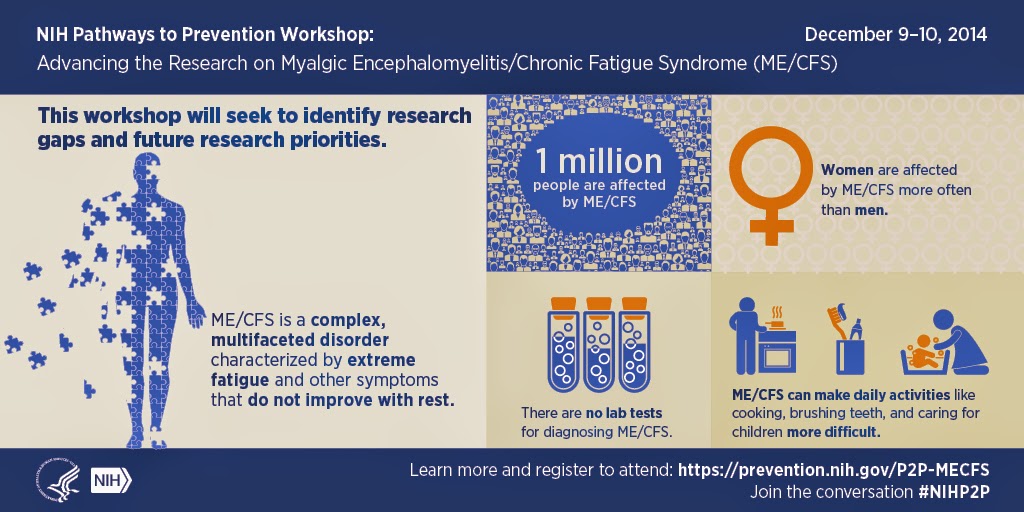
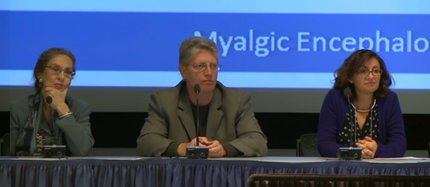
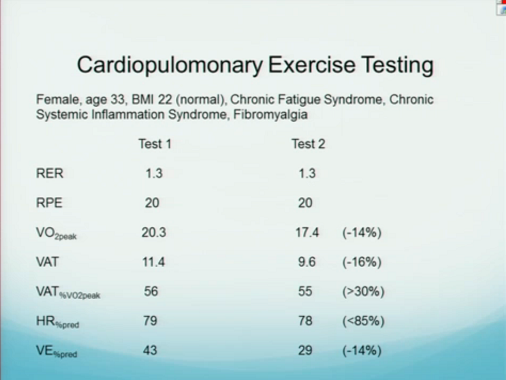
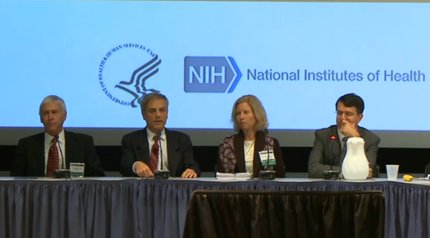

 RSS Feed
RSS Feed
